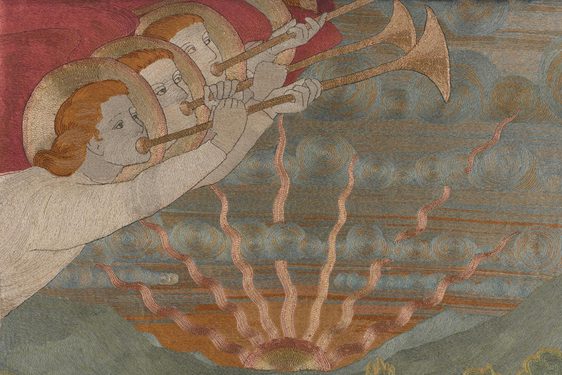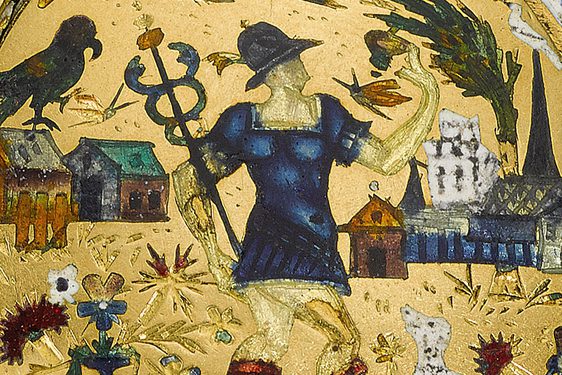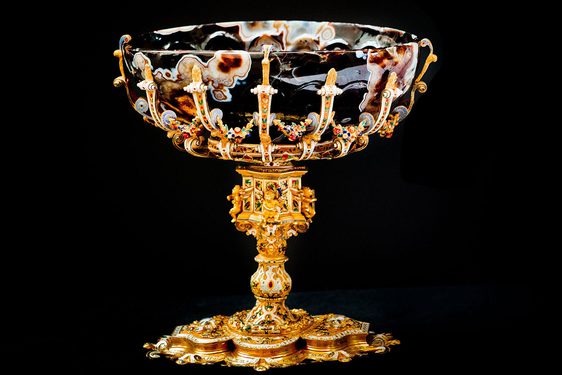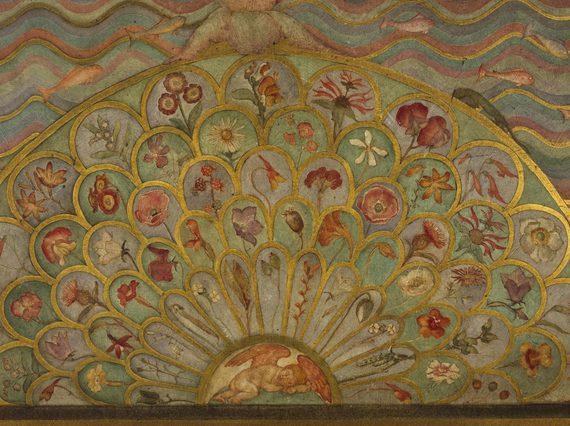
Interpreting the Willowwood Piano by Phoebe Anna Traquair
News Story
In 1910, Phoebe Anna Traquair decorated a grand piano that had been commissioned for the Great Hall at Lympne Castle in Kent. Her painted designs for the piano reflect some of the literary and visual sources which inspired her work.
The decoration for this piano was inspired by three sources, united by the themes of music and love. The Willowwood sonnets, written by Dante Gabriel Rossetti, are a mystical meditation on the joys and sorrows of love. The Song of Solomon from the Old Testament expresses love for the Divine. And finally the Greek god Pan, playing his pipes, symbolises a beguiling eroticism.
We delve into the inspiration and interpretation behind some of the panels on this extraordinary piano.
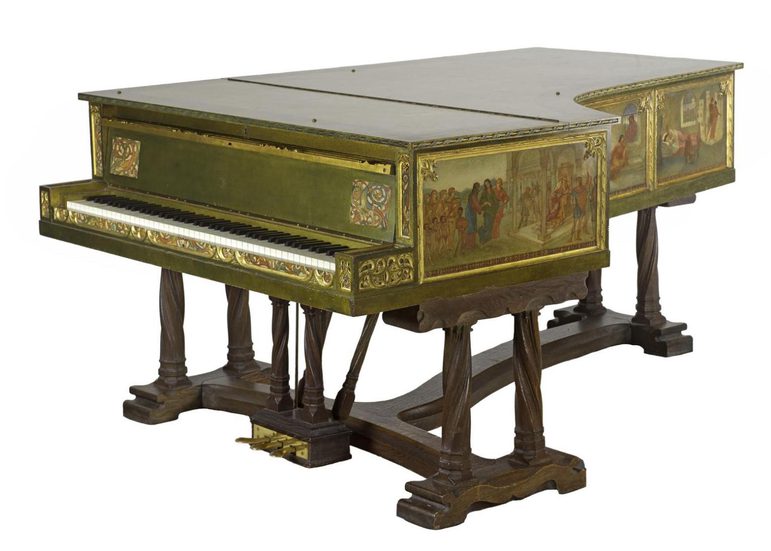
Piano by Steinway, case designed by Robert Lorimer, woodcarving by Scott Morton & Co 1909, decorated by Phoebe Anna Traquair, 1910. Museum reference A.1995.605.
The Song of Songs
The Song of Songs, from the Christian Old Testament is also known as the Song of Solomon.
It presents the voices of a bridegroom and a bride, praising each other and longing for each other. Jewish tradition interprets the work as an allegory of the relationship between God and Israel.
In Christianity, in addition to its literal meaning of a romantic song between man and woman, the poem has been read as an allegory of Christ (the bridegroom) and his Church (the bride).
Image gallery
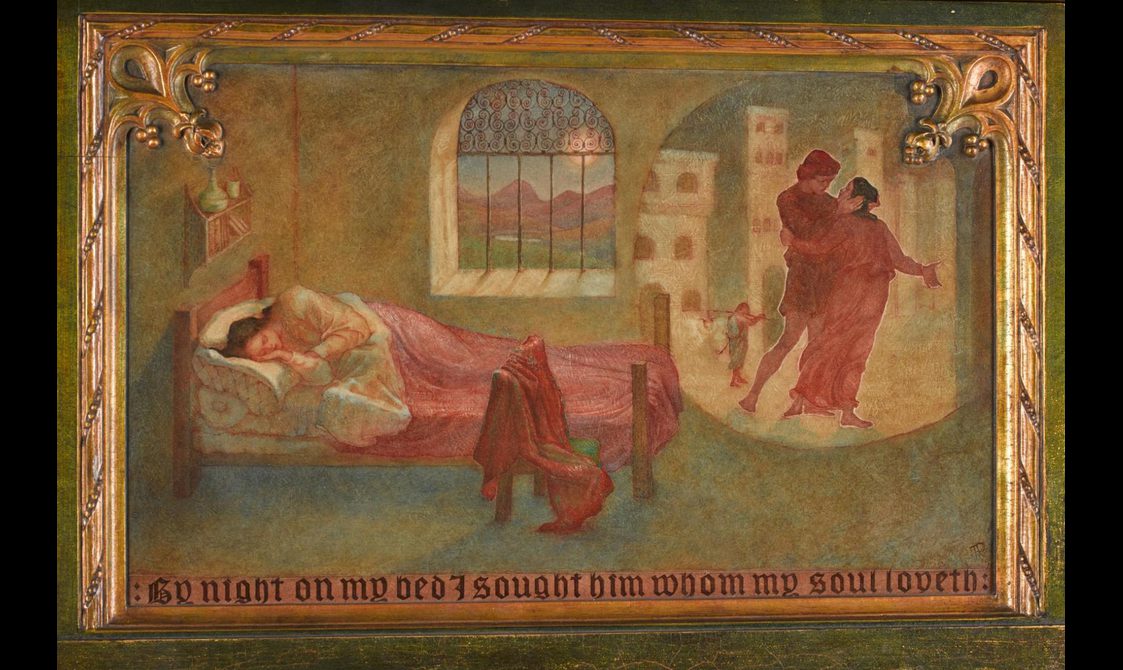
Detail from Traquair's painted decoration for piano, ‘By Night on my Bed’. Museum reference K.2005.36.1.
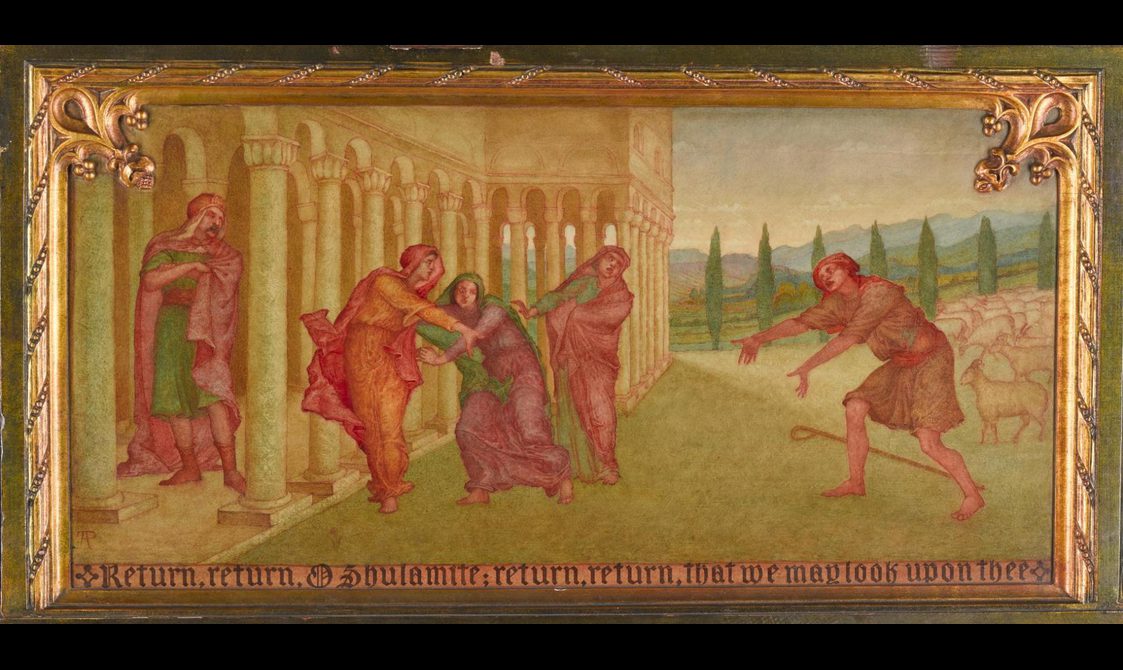
Side panel depicting ‘Return, return O Shulamite’, from The Song of Solomon. Museum reference K.2005.37.1.
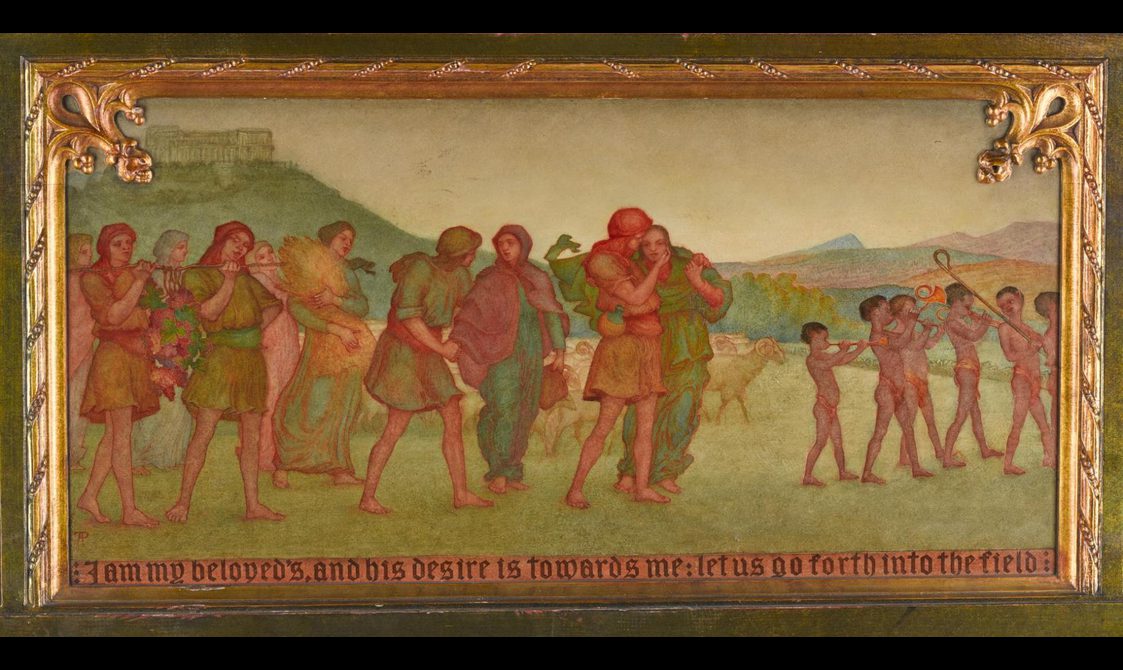
Side panel depicting ‘I am my beloved’s’, from The Song of Solomon. Museum reference K.2005.38.1.
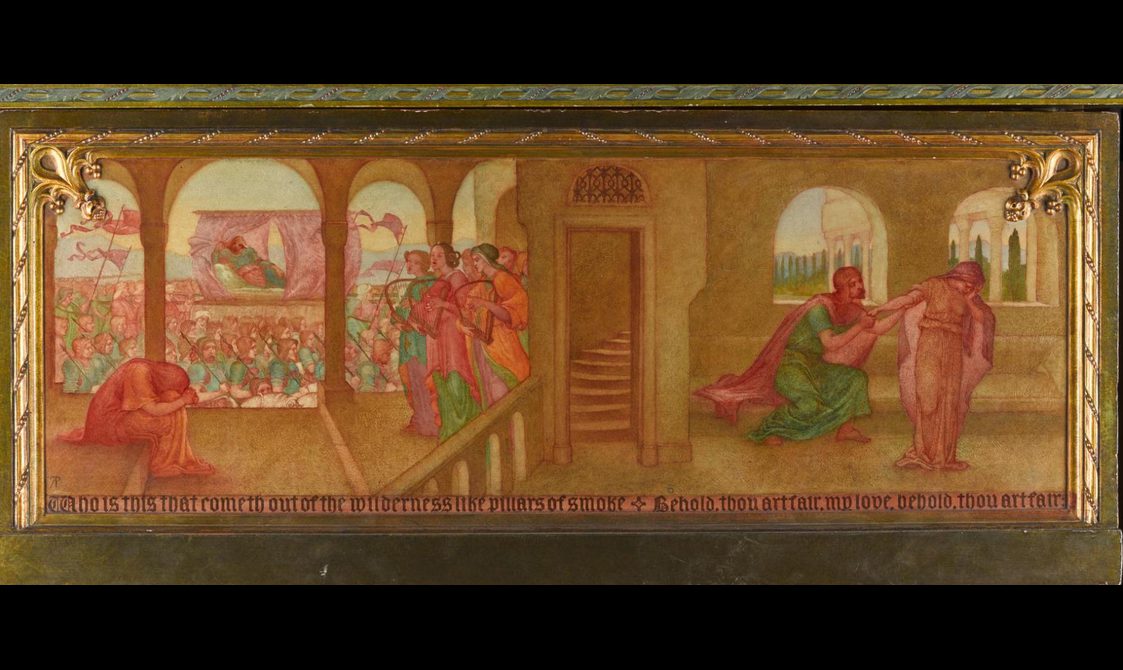
Side panel depicting ‘Who is this that cometh out of the wilderness’, from The Song of Solomon.
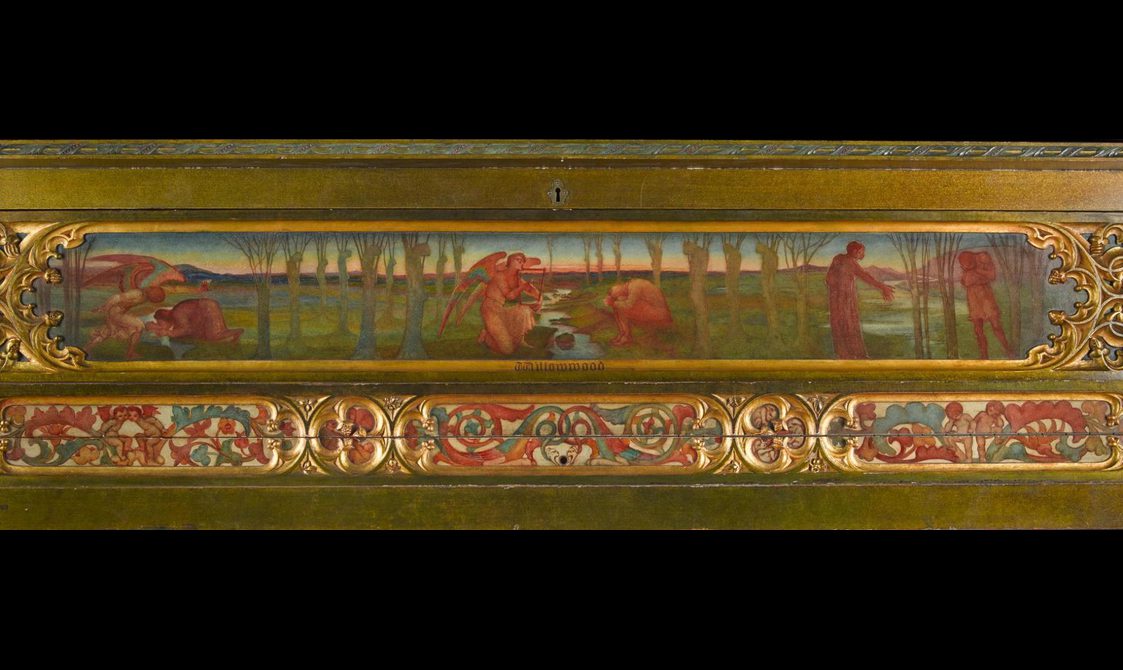
Panel above the keyboard depicting a scene from Willowwood. Museum reference
K.2005.35.
Pan and Psyche
The story of Pan and Psyche is another recurring theme in Traqauir’s work. It is shown here in one of the painted panels for the Willowood Piano.
In classical Greek myth, Psyche was Greek goddess of the soul who was pursued by the amorous god Pan. River nymphs helped Psyche to escape his advances by transforming her into hollow water reeds. Pan cut the reeds to create the first Pan pipes, which are also known as syrinx.
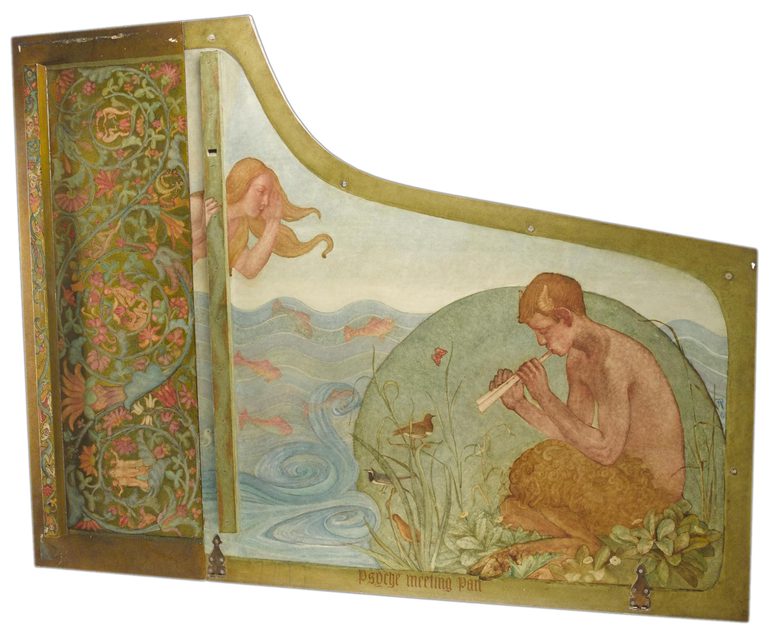
Depiction of Pan and Psyche on the inside of the piano lid.
The Willowwood sonnets by Dante Gabriel Rossetti
Originally written in 1868, the Willowwood sonnets are part of a larger work by Dante Gabriel Rossetti, The House of Life. The sonnets explore the author’s longing for lost love.
Phoebe Traquair's first treatment of the sonnets was in illuminated manuscripts of Rossetti’s poems in 1890. Traquair’s designs reflect Rossetti’s own painting style, itself heavily influenced by medieval illuminated manuscripts.
In 1910, her painted design for the grand piano for Lympne Castle incorporated a scene from the sonnets on the panel above the keyboard.
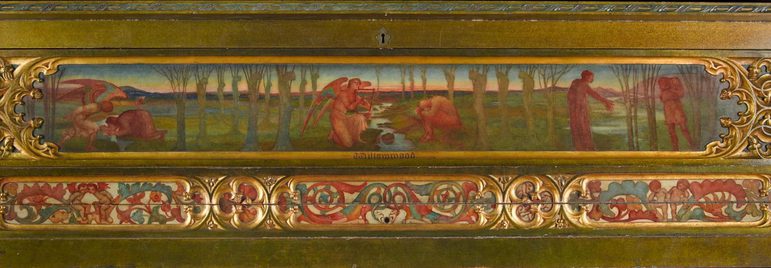
Panel above the keyboard depicting a scene from Willowwood. Museum reference
K.2005.35.
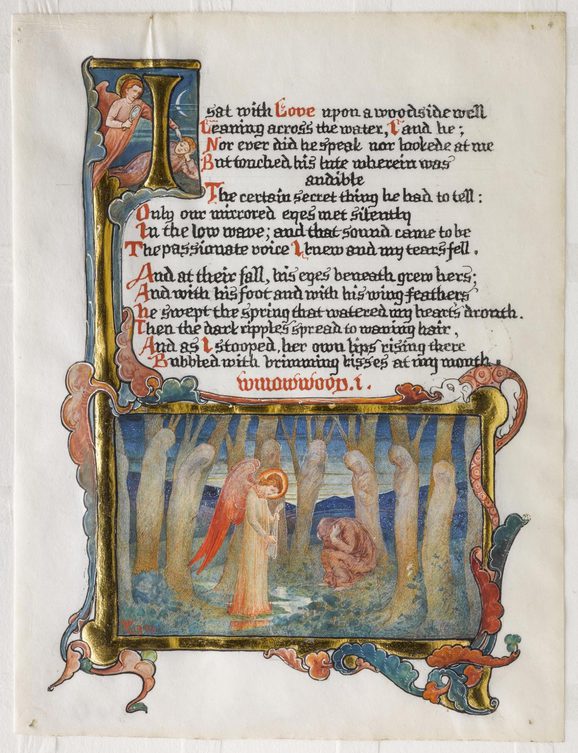
Willowwood I, page from an illuminated manuscript of the first Willowwood sonnet by Dante Gabriel Rossetti, one of four pages illustrating the four sonnets by Phoebe Anna Traquair, 1890. Museum reference K.2010.58.1
The Willowwood Piano is on display in the Design for Living gallery at the National Museum of Scotland.
